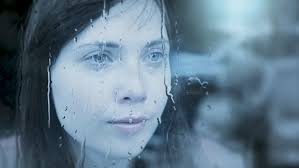
Skeletons and Rain and Magic, Oh My!
Miranda Alexander
There are three elements in the literary world that always appear to be constant throughout stories: skeletons, rain, and magic. G.K. Chesterton explores these elements within the pages of his essays: “A Defence of Skeletons,” “The Romantic in the Rain,” and “Magic and Fantasy in Fiction.”
In “A Defence of Skeletons,” Chesterton opens the essay by comparing the bare, leafless trees of winter to the naked human skeleton. He explains that some individuals frown upon the state in which barren trees appear, lifeless and dark. As humans, we become unnerved at the thought of a cold, wooden structure standing out in the open for all to see. We prefer a brighter atmosphere with warmth and blossoms, something lovely to cover the ugly. Why it is it that we often cringe at the sight of such a natural thing? Chesterton explains one insightful theory: “a strange idea has infected humanity that the skeleton is typical of death” (Chesterton 6).
Throughout literature, the skeleton indeed has been used a symbol of death and it is not too difficult to comprehend why. When someone’s life comes to an end, they are buried and overtime the flesh and organs decay away, leaving behind a pile of bones. However, Chesterton claims otherwise, he calls the skeleton “the essential symbol of life” (Chesterton 7). The skeleton is an important and very much necessary tool of the body. Without a skeleton every animal and human would be practically formless and weak.
Chesterton dives deeper into humanity’s fear of the skeleton, by taking the nature of pride into consideration. It is in our worldly nature to possess an amount of pride in the skin that covers our skeletal frames. For if we were to strip away our sacred exterior, we would discover we have a “serious objection to being undignified” (Chesterton 7). When stripped of dignity, we become vulnerable creatures, constantly worried others may get a proper glance of our skeleton and foundation. Pride clouds the eyes of insight with rose tinted vanity and devalues the beautiful purpose of skeletons.
Much like humanity’s distaste towards skeletons, Chesterton believes the public’s dread of rain is equally confounding. His essay “The Romantic in the Rain,” focuses on the positive qualities of rain rather than the ever pessimistic claims uttered by bitter individuals. Chesterton describes rain as an “inspiring and delightful thing” (Chesterton 57). This description proves to be fairly accurate when one considers how often rain is present in literature. It is a force that saturates the pages of British literature, from Shakespeare’s King Lear to Hardy’s Far from the Madding Crowd.
Rain is also a method of cleansing: “its giant brooms and mops seem to reach the starry rafters and starless corners of the cosmos” (Chesterton 57). Not only does it cleanse the sky, it washes over the various surfaces of earth as well as its inhabitants. Yet, more often than not, people insist on scurrying for shelter at the first signs of a downpour. Could it be that we are so proud that we willingly refuse to stand under the purification of precipitation? Chesterton expresses that some individuals feel “undignified” when stalking the streets, drenched from an unwanted “public shower.”
What does dignity matter once one marvels over the beauty rain provides? The fragrance of trees and flowers heightens, the very atmosphere appears to become thicker and fuller. Furthermore, every object rain touches is polished into a gleaming piece of creation; “it is like moving in a world of mirrors” (Chesterton 59). There is purity, beauty, and poetry in the idea of throwing dignity to the wind and simply basking in the rain.
For the daring souls who are brave enough to appreciate skeletons and rain for their worth, it should be quite painless to admit an interest in magic. Chesterton examines the elements of the unreal in “Magic and Fantasy in Fiction.” While most tend to focus primarily on the dark and malevolent side of magic, Chesterton draws attention to both black and white magic. He claims “there is no reason within reason, why literature should not describe the demonic as well as the divine aspect of mystery or myth” (Chesterton 227). It is imperative to paint a clear picture of good and evil in literature, they both exist within reality and fiction. In every fairytale one is sure to find a brave hero and a wicked villain battling against each other to the end. The same can be said for everyday conflicts in the real world.
Just as heroes and villains exist within the pages of a book and the earth we walk, light and darkness occupy them as well. Chesterton focuses on the various sorts of light and darkness found in fantasy. In literature, two natures of magic are most frequently mentioned: white magic and black magic. The color white symbolizes purity, while black is commonly tied to death and immorality. Black magic is used with harmful intentions and white magic is said to conquer the opposing force. “Magic for magic’s sake, like art for art’s sake, is found in fact to be too shallow, and to be unable to live without drawing upon things deeper than itself” (Chesterton 230). There are profound lessons to be learned from stories of good versus evil, it is the magic that opens our minds to these entities.
It seems nearly impossible to imagine a world deprived of skeletons, rain, and magic. For what would we be with only our organs and flesh? How would we survive on a land lacking water? Would we continue to wake from our slumber with hopes of defeating dark forces?